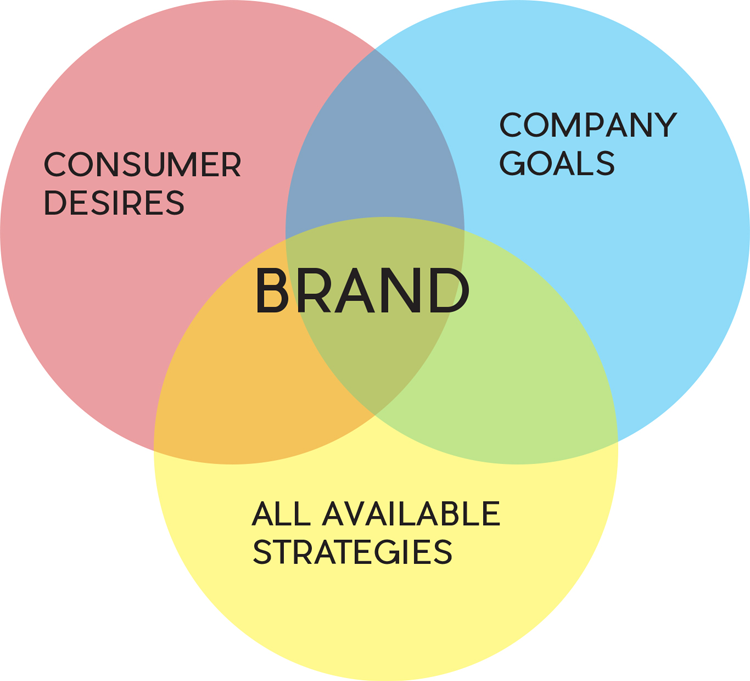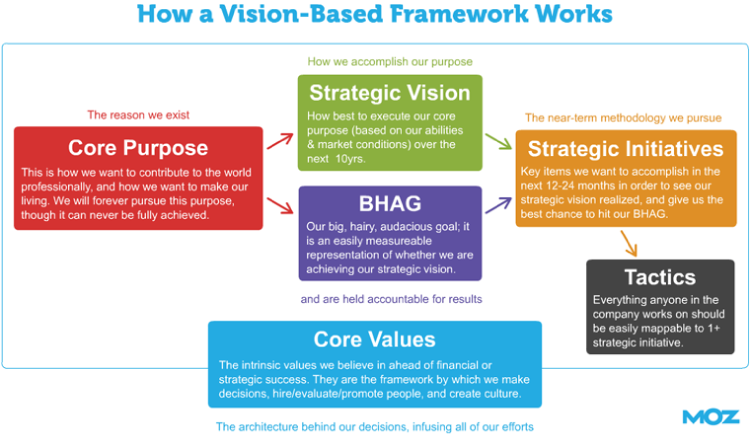

Updated December 19, 2024
It's crucial to be able to communicate a cohesive brand story to your employees and customers. It's what you stand for – your vision, purpose, and values. Try using a vision-based framework to get started defining your brand.
Updated July 13, 2022
Your brand is responsible for telling a story.
Looking for a Public Relations agency?
Compare our list of top Public Relations companies near you
Just as storytelling is the means through which we impose meaning, order, and structure on random events, so to a brand shapes how customers interact with a company.
It’s much more than a logo or mission statement.
Whether you want to attract new customers, retain loyal ones, reorganize your company, or redefine your identity, defining your brand identity and brand vision should be a priority.
If you don’t know where to begin defining your brand, this article walks you through how to use a vision-based framework to get started.
Still stuck on your company’s brand? Hire one of the top service providers on Clutch.
Determine what your brand currently is by creating a list of the attributes that define your organization and brand personality.
Brand characteristics may include:
Remember that your brand exists at the center of a combination of elements.

Your brand strategy also includes elements like:
A brand takes into account your business goals, your customers wants and needs, and your business's approach to addressing customer needs.
Therefore, it’s important to survey both your employees and customers to see how they define your brand.
If your leadership team and employees think your brand is one thing but your customers have a different impression, then your brand most likely is what your customers think of it.
What else goes into your brand story? Read this: ‘Brand Assets: Tips for Small Businesses Growing a Brand’
Approach the rebranding process using a vision- and values-based framework.
Begin discussing and defining your company’s:

Source: https://moz.com/rand/vision-based-framework/
SEO software company Moz used a vision-based approach to defining its brand, creating a “TAGFEE code,” an acronym that represents the company’s core values:
Like Moz, articulate your story concisely so that it serves as a promise about what your company stands for and the value it offers.
Consider including your employees in the process to hear their thoughts on how they see the company and where they want it to go in the future.
Including the whole company in the process of writing your brand narrative gives everyone ownership – an important part of creating a cohesive company culture that fits your brand.
Build your company culture purposely around your core purpose and values.
Rebranding internally can be difficult if your company already has a strong internal culture, but it’s never too late to change.
Make hiring choices based on your company’s values.
Core values impact who you hire, how you treat your employees, and how you interact with the world.
Don’t stick to a tired interview process if you can figure out a better way to gauge how potential employees might fall in line with your story.
For example, instead of evaluating potential new hires based on their resume alone or by browsing their LinkedIn, ask questions that get at how they embody the company’s core values.
You ultimately want to trust your employees as spokespeople for your company, so finding the right fit is important.
An emerging human resources tactic focuses on “employee engagement,” which entails embedding your culture and values in the workplace. You want your employees to not only think of it as a job but also feel connected as stakeholders in the company’s success.
The employee engagement model encourages offering opportunities for personal and professional growth at work to help each employee develop the skills needed to personify company values.
If you want reliable workers, then teach them about teamwork and loyalty.
Additional Reading: ‘Internal Branding: 5 Strategies to Motivate Employees’
Use the SOST approach (Situational Analysis, Objective, Strategy, Tactics) to communicate your new brand story publicly.

Goal: Determine where your company currently fits in the market.
Action: Analyze your competition and current trends. Ask yourself, "What’s happening in the market that may affect my business?"
Goal: Use your core purpose and vision to identify the position in the market you want to inhabit.
Action: List out the goals you need to accomplish to meet your core purpose.
For example, “put the customer first” is a common objective for both business-to-business (B2B) and business-to-consumer (B2C) companies.
Goal: Create a game plan for meeting your objectives.
Actions:
Customers expect brand interactions to be a full experience, from scrolling through a website, to using Pinterest to keep track of what they like, to reading online reviews, to opting-in to newsletters, to responding to push notifications, to placing an order seamlessly, to receiving a product in personalized packaging.
Therefore, your strategies should consider the products and services you offer, your target audience, and the marketing channels you use to communicate with your audience.
Goal: Identify the steps you need to take to achieve each strategy that makes up your objective.
Actions:
Defining your brand and creating a company culture that embodies your purpose and values may seem overwhelming at first, but it’s an important step in creating a foundation for business success and growth.
Use this article to guide you through the steps necessary to create a vision- and value-based framework at your company.
As you begin, remember that it’s entirely possible to change. Do not feel discouraged because people don’t know what you do or what your message is. There’s always time to figure out a new or better story.
So start somewhere. What’s the plot? Who are the characters? What are the settings? What’s the tone of the narrative?
Explore the top brand strategists by visiting Clutch’s directory of branding agencies.

Tyler Tennant is a writer for Designli and covers topics related to software development for startups and small to mid-size businesses. Designli builds software that is best consumed on mobile phones, ranging from native apps to mobile-responsive websites, with a focus on certainty: guaranteed price points and guaranteed time-frames.


